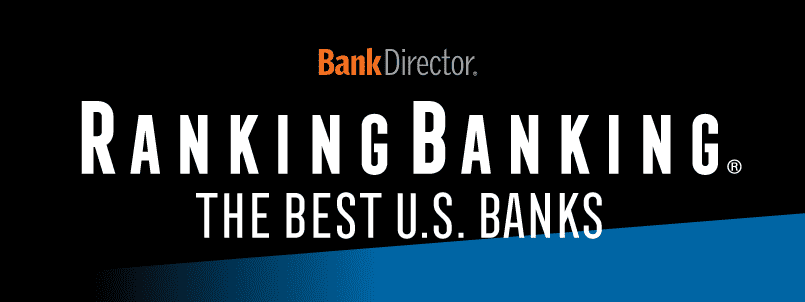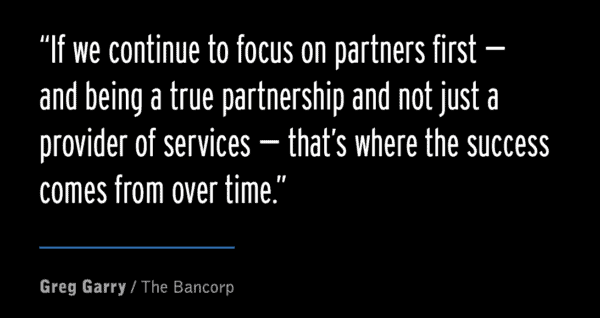
RankingBanking: The U.S. Best Banks
In this latest publication, Bank Director’s RankingBanking study, sponsored by Crowe LLP, we rank the performance of the 300 largest publicly traded banks in the U.S. Previously, we called this ranking the Bank Performance Scorecard, but it’s essentially the same thing. Piper Sandler & Co. compiles the annual list, ranking each bank by metrics that examine profitability, asset quality and capital adequacy; the scores are then added up with an equal weighting for each, determining a final score. This year, we rank the best banks overall and by asset size:
However, a one-year ranking doesn’t get at the heart of what makes a top performing bank. Results change from year to year and can be influenced by the actions a bank makes one year to improve future earnings. So this year, we dissected the list to profile perennial top performers and banks that have become stronger through extraordinary hard work. You’ll find these stories in the RankingBanking report:
- Capital One’s Secret to Success, by Naomi Snyder, editor-in-chief
- Building a Powerhouse at Synovus, by Laura Alix, director of research
- The Bancorp’s Perpetual Motion Money Machine, by Kiah Lau Haslett, managing editor
- Lakeland Financial’s Success Grounded in Old-School Banking, by Emily McCormick, vice president of research
“[Perennial top performers] may not be there every single year, because they’re going to have profitability hits periodically, but they will consistently reappear on the ranking,” says Kara Baldwin, audit partner at Crowe.
Capital One Financial Corp. is one of those perennial performers. It has a strong core deposit base combined with a high yield asset base in the form of credit cards and a couple of other lending categories. Chairman and CEO Richard Fairbank has grown the McLean, Virginia-based company to $432.4 billion in assets since he founded it more than 30 years ago. Historically, it has attracted some of the best technologists in the country, created a culture of experimentation, and driven results through a focus on data and the competition.
Likewise, $6.6 billion Lakeland Financial Corp. in Warsaw, Indiana, has landed in the top 20 every year since Bank Director started ranking banks across asset sizes in 2018. Lakeland Financial CEO David Findlay has emphasized creating a strong culture, rigorous employee training and serving commercial customers like no other. A relentless focus on the customer is the key to success for banks, according to someone who has nearly two decades of experience on senior leadership teams at big U.S. banks. John Eggemeyer, the founder and managing principal at Castle Creek Capital, told BankDirector.com earlier this year that banks that focus on customers outperform other banks, a lesson they learned from fintech companies in recent years.
A mid-sized commercial bank such as Lakeland has the luxury of focusing on culture and customers by avoiding the distractions of acquisitions, which Lakeland has avoided for almost two decades. “By doing things organically,” says Findlay, “we get to select the next banker, one at a time.”
Some top performing banks exhibit an ability to ferret out a niche where one can excel. A business line may take years of investment to make it work. Staying focused on that investment means not chasing the latest fad. “There are multiple ways of making money in the banking market,” says Rick Childs, a partner at Crowe. “It’s trying to find what the key to your success is and then sticking to it.”
The Bancorp under CEO Damian Kozlowski honed its focus after years of investing in compliance following regulatory problems in 2014. The move has paid off. The Wilmington, Delaware-based company defined the space that’s known as banking as a service, handling customer deposits and transactions for some of the nation’s largest financial technology companies, such as PayPal Holdings and its subsidiary Venmo.
Meanwhile, Columbus, Georgia-based Synovus Financial Corp. is a classic comeback story. Devastated by the last financial crisis, the previous CEO focused on cost savings, consolidating the company’s 30 charters under one brand and making a deal that expanded its foothold in high-growth Florida. New CEO Kevin Blair aims to strengthen the bank’s position in the Southeastern U.S. and diversify into higher yielding businesses.
Almost every bank says it’s focused on what it does best. But if it’s not a top performing bank, that’s a hard argument to make. “Don’t do the same thing over and over again, expecting a different result; that would be the definition of insanity,” says Kirk Wycoff, managing partner at Patriot Financial Partners, which invests in community banks and fintechs. “Do something different.”
He believes yield is one of the most important drivers of top performing banks. “We want all our banks to have a specialty business where they can charge more than 3.5%,” he says. “You better have something that differentiates you.”
Wycoff also believes the only way to become a top performing bank today is to use technology to drive efficiency. Banks in prior years focused on taking out costs such as branches and staff. That isn’t going to be the sole driver of efficiency gains going forward, he says. Customer-facing functions that use software to help customers navigate are going to drive returns as well. “Clients want efficiency,” Wycoff says. “When they are coming to the bank, they feel like they’re going to the dentist. They don’t enjoy it.”
At the end of the day, a bank that focuses on customers, culture, higher yielding businesses and efficiency will outperform others.
“The top performers tend to deliver top results,” Childs says, “because that’s how they’re motivated.”
Click here to access the complete RankingBanking study.



